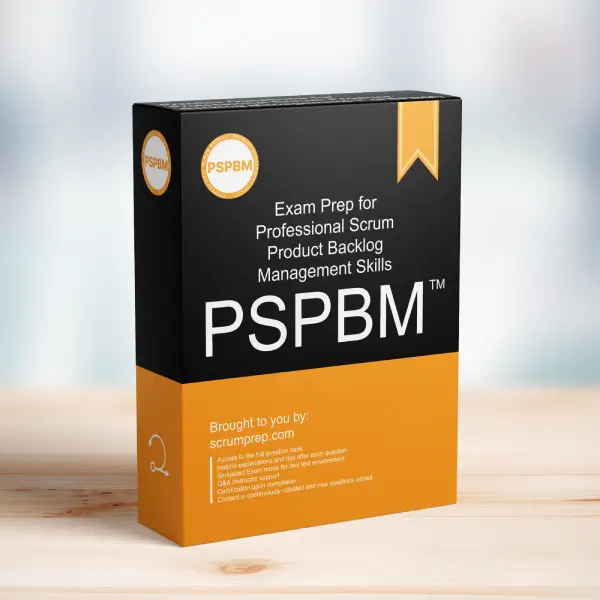Managing Stakeholder Requests in the Product Backlog
Effectively managing stakeholder requests is crucial for maintaining a well-ordered and value-driven Product Backlog. The Product Owner must evaluate and handle requests to ensure they align with the product’s goals and add value.
Exam Question
The Product Owner receives a request from a stakeholder to add a new feature to the product. The stakeholder is convinced that will make existing customers happy. What is the first step in managing this request in the Product Backlog?
(choose the best answer)
A. Reject the request as it is outside the scope of the product.
B. Assign the request to a specific Scrum Team member for implementation.
C. Add the new feature directly to the top of the backlog.
D. Find a small experiment that will evaluate the viability of the idea.
Correct Answer
D. Find a small experiment that will evaluate the viability of the idea.
Explanation
Correct Answer
D. Find a small experiment that will evaluate the viability of the idea:
The first step in managing a new feature request should be to evaluate its viability and potential value. This can be done by running a small experiment or creating a minimal viable product (MVP) to gather feedback and assess the impact of the feature. This approach helps ensure that the new feature will indeed make existing customers happy and aligns with the product goals.
Why the Other Options Are Less Appropriate
A. Reject the request as it is outside the scope of the product:
Rejecting the request outright without evaluation can lead to missed opportunities. It is essential to assess whether the feature could provide value before making a decision.
B. Assign the request to a specific Scrum Team member for implementation:
Assigning the request directly to a team member without prior evaluation may result in wasted effort if the feature does not provide the expected value.
C. Add the new feature directly to the top of the backlog:
Adding the feature directly to the top of the backlog without evaluation can disrupt the prioritization of other valuable items and may not necessarily align with the overall product goals.
Relevance to the PSPBM Skills Exam
Understanding how to manage stakeholder requests and evaluate new ideas is crucial for the PSPBM Skills exam. It demonstrates the Product Owner’s ability to maintain a value-driven Product Backlog and make informed decisions that benefit the product and its users.
Key Takeaways
- Evaluating new feature requests through small experiments or MVPs helps ensure they provide value.
- Proper assessment prevents wasted effort and maintains a well-ordered Product Backlog.
- Effective stakeholder communication and evaluation are essential for maintaining alignment with product goals.
Conclusion
Managing stakeholder requests effectively involves evaluating the viability of new ideas before making decisions. This approach ensures that the Product Backlog remains focused on delivering value and aligns with the product’s strategic goals. For more information on preparing for the PSPBM Skills exam, visit our Professional Scrum Product Backlog Management Skills PSPBM™ Exam Prep.


